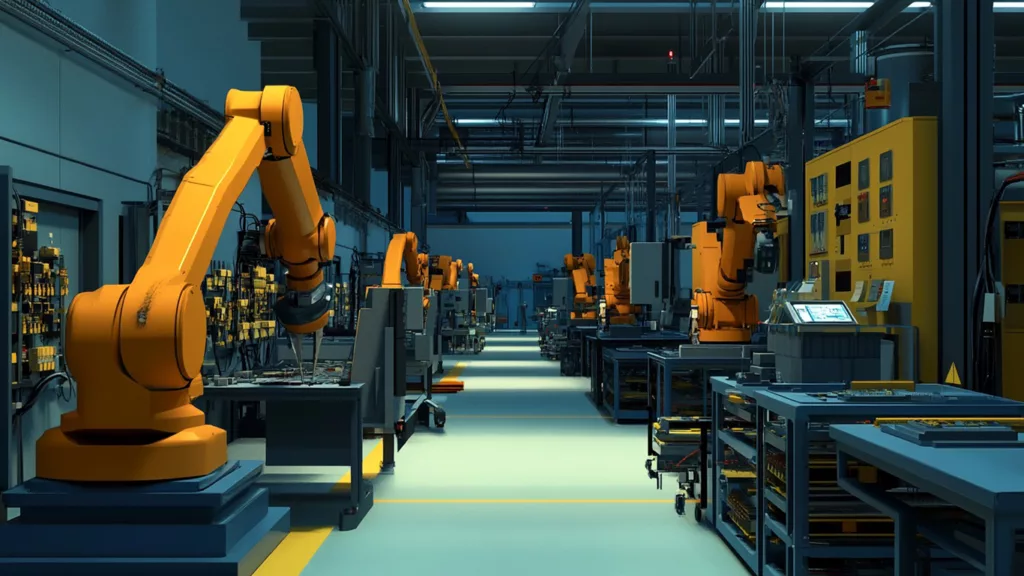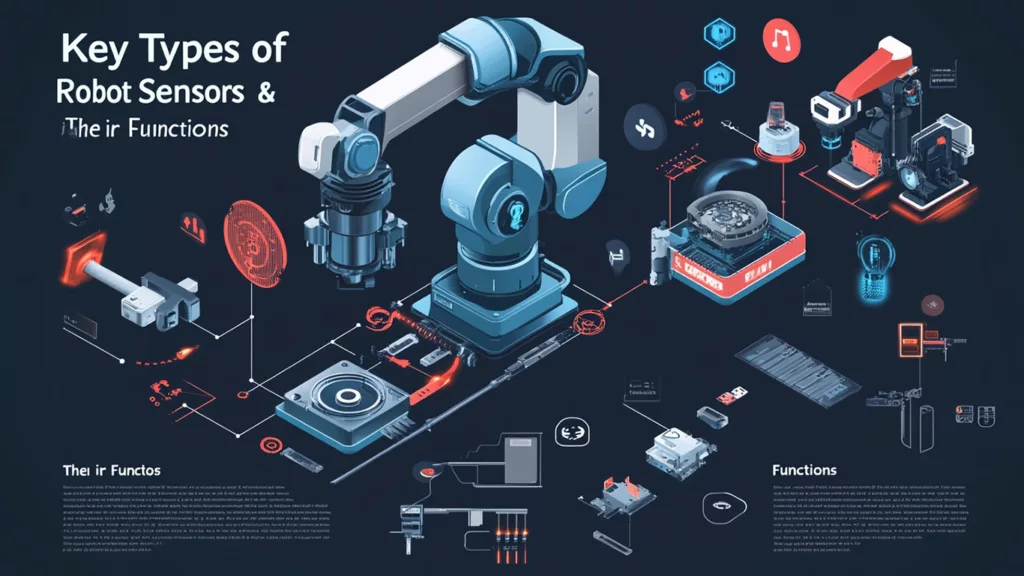Introduction: The Brain Behind the Bots
As robotics continues to redefine what’s possible in modern industries, robot sensors are quietly emerging as the unsung heroes behind the scenes. These advanced components give robots the critical ability to perceive, adapt, and interact with their environments — turning mechanical systems into intelligent, responsive machines.
Whether it’s a robotic arm on an automotive assembly line or an autonomous mobile robot in a warehouse, the integration of robot sensors is what enables precision, safety, and smart decision-making. In this article, we’ll explore how sensors are revolutionizing industrial automation, the latest in sensor technology, and why they’re central to the future of the robotics industry.
What Are Robot Sensors?
A robot sensor is a device that detects changes in the environment or internal robot systems and converts that data into a readable signal. This sensory input allows robots to interpret surroundings, make decisions, and execute complex tasks with minimal human intervention.

Common Types of Robot Sensors:
- Force sensors: Measure pressure, load, and torque to enable delicate tasks like assembly or polishing.
- Position sensors: Track the exact location and movement of robot parts for accurate operations.
- Proximity sensors: Detect objects nearby to avoid collisions.
- Vision sensors: Enable image recognition, barcode scanning, and quality inspection.
- Temperature sensors: Monitor heat levels to prevent overheating and maintain safe operating conditions.
Each of these plays a vital role in enhancing robotic capabilities, especially in high-stakes applications like industrial automation and precision manufacturing.
Why Robot Sensors Matter in Industrial Automation
The backbone of smart factories and Industry 4.0 lies in sensor technology. Robot sensors provide critical feedback loops that empower machines to operate with greater autonomy, safety, and efficiency.
Benefits of Robot Sensors in Automation:
1. Enhanced Precision
Position sensors ensure robotic arms can place components with micrometer-level accuracy. In electronics assembly or semiconductor manufacturing, such precision is vital.
2. Real-Time Decision Making
With real-time feedback from force sensors, robots can adjust their grip or pressure automatically. This prevents damage to delicate parts, increasing quality control.
3. Predictive Maintenance
Robot sensors can detect anomalies in motion or force early on, enabling predictive maintenance and reducing costly downtime.
4. Increased Safety
In collaborative robot environments (cobots), robot sensors detect human presence and minimize collision risks — vital for safe human-machine interaction.
Sensor Technology Trends Transforming Robotics
The landscape of sensor technology is evolving rapidly to meet the growing demands of the robotics industry. Here are some trends pushing the envelope:
1. Miniaturization and Integration
Modern sensors are becoming smaller, faster, and smarter — making it easier to integrate multiple sensing functions within compact robotic systems.
2. AI and Sensor Fusion
Combining inputs from multiple robot sensors — such as vision, position, and force — with AI allows for better environmental understanding and adaptive behavior.
3. Wireless and IoT Connectivity
Wireless sensors enable remote monitoring, reduce cable clutter, and support cloud-based analytics. This is a huge leap for scalable, smart factory operations.
Use Cases Across Key Industries
The adaptability of robot sensors makes them indispensable across a wide range of industries:
📦 Manufacturing & Assembly
In industrial automation, sensors enable precise welding, painting, and assembly tasks — even compensating for variability in materials or part placement.
🤖 Collaborative Robotics
Cobots use force sensors and vision to safely interact with humans on shared tasks, from packaging to medical device assembly.
🚜 Agricultural Machinery
Automated harvesters use position sensors to guide navigation and force sensors to detect crop yield — streamlining food production.
🏥 Medical Robotics
Surgical robots rely on ultra-sensitive force sensors to make incisions or insert devices with surgeon-like precision, reducing invasiveness and improving recovery.
Choosing the Right Robot Sensor for Your Application
Selecting the right robot sensor depends on several factors:
- Application Type: Precision assembly vs. heavy lifting require different sensing capabilities.
- Environment: Consider humidity, temperature, vibration, or electromagnetic interference.
- Response Time: High-speed processes demand sensors with fast response and high-frequency sampling.
- Accuracy & Range: Ensure the sensor fits your tolerances and operational scale.
At XJCSENSOR, we specialize in delivering customized robot sensor solutions for everything from smart factories to autonomous systems. Our portfolio includes:
✅ High-precision force sensors
✅ Durable, compact position sensors
✅ Tailored solutions for robotics industry needs
Optimizing Performance with XJCSENSOR
XJCSENSOR has been at the forefront of sensor technology, helping clients build smarter, more reliable robotic systems. Our products are trusted across sectors like:
- Industrial automation
- 3C electronic automation
- Medical equipment
- Agricultural robotics
- Automotive systems
All sensors are engineered for seamless integration, real-time feedback, and rugged performance.
Final Thoughts: Sensing the Future
In the age of smart machines and AI-driven systems, the role of the robot sensor cannot be overstated. From enabling safe human-robot collaboration to powering predictive maintenance and high-precision automation, these components are the bridge between mechanical motion and intelligent action.
As the robotics industry continues to scale, so too will the importance of high-performance sensor technology — and companies that invest in the right sensing solutions today will lead tomorrow’s automation revolution.
🔧 Ready to Build Smarter Robots?
XJCSENSOR is your trusted partner for advanced robot sensor solutions tailored to your industrial and automation needs. Whether you’re upgrading your manufacturing line or developing next-gen robotic systems, we’ve got the right sensor for the job.
👉 Contact us today to request a quote or explore our full product catalog.
📩 Or subscribe to our newsletter for the latest in sensor technology and automation trends!


